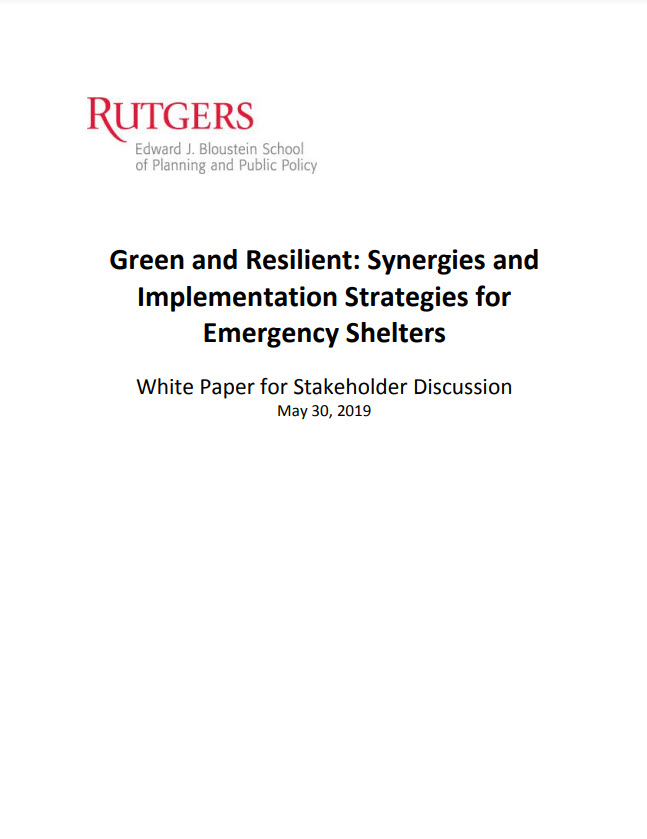Some occurrences of natural and human-made hazards require use of emergency shelters. Sheltering is ultimately a local government responsibility and most sheltering needs are met locally. Multijurisdictional, large scale or extended duration events may require coordinated planning and operational support from local, county, state and/or federal government agencies. In New Jersey, hazard mitigation planning mainly resides at the county level in the form of County Hazard Mitigation Plans (HMPs), which are developed with local input. This white paper (aka Shelter Safe) demonstrates how resiliency, “the ability to prepare and plan for, absorb, recover from, and more successfully adapt to adverse events” (The National Academy of Sciences, 2012, p.1) may be increased by incorporating green building strategies into emergency shelters. A concurrent resiliency-focused update of the New Jersey Green Building Manual1 provides a detailed resource of appropriate green building strategies for incorporation into shelter siting, construction, renovation and operation. In this context, green and resilient buildings comprise structures and system measures that are expected to increase the performance of a building during and in the wake of a disaster scenario, enabling it to provide adequate sheltering needs (New Jersey Climate Adaptation Alliance (NJCAA), 2014). Many green building strategies are synergistic with resilient building objectives and help prepare and adapt buildings for the project planning disaster scenarios identified in this white paper as most relevant for New Jersey (Table 4). These include natural scenarios –e.g., wind, flooding, extreme temperatures, airborne, and man-made scenarios – e.g., gridfailure, and threats to safety and security. This white paper further emphasizes locational and socioeconomic dimensions of resilience demonstrating via mapping tools how the locations and configurations of emergency shelters may be optimized to serve the most vulnerable population groups.This approach is significant for minimizing risks and losses during hazards and a leading best practice.
Green and Resilient: Synergies and Implementation Strategies for Emergency Shelters
Citation:
Green and Resilient: Synergies and Implementation Strategies for Emergency Shelters. May 30, 2019. Written for the New Jersey Department of Community Affairs (NJDCA) as part of the “Green, Resilient and Prosperous NJ: Updated Tools and Guidelines for Buildings & Land Use” project contracted to the Rutgers Center for Green Building.
